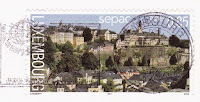Machu Picchu stands 2,430 m above sea-level, in the middle of a tropical mountain forest, in an extraordinarily beautiful setting. It was probably the most amazing urban creation of the Inca Empire at its height; its giant walls, terraces and ramps seem as if they have been cut naturally in the continuous rock escarpments. The natural setting, on the eastern slopes of the Andes, encompasses the upper Amazon basin with its rich diversity of flora and fauna.
Sunday, 24 March 2013
Japan - Itsukushima Shinto Shrine
The island of Itsukushima, in the Seto inland sea, has been a holy place of Shintoism since the earliest times. The first shrine buildings here were probably erected in the 6th century. The present shrine dates from the 12th century and the harmoniously arranged buildings reveal great artistic and technical skill. The shrine plays on the contrasts in colour and form between mountains and sea and illustrates the Japanese concept of scenic beauty, which combines nature and human creativity.
China - Sichuan Giant Panda Sanctuaries - Wolong, Mt Siguniang and Jiajin Mountains
Sichuan Giant Panda Sanctuaries, home to more than 30% of the world's pandas which are classed as highly endangered, covers 924,500 ha with seven nature reserves and nine scenic parks in the Qionglai and Jiajin Mountains. The sanctuaries constitute the largest remaining contiguous habitat of the giant panda, a relict from the paleo-tropic forests of the Tertiary Era. It is also the species' most important site for captive breeding. The sanctuaries are home to other globally endangered animals such as the red panda, the snow leopard and clouded leopard. They are among the botanically richest sites of any region in the world outside the tropical rainforests, with between 5,000 and 6,000 species of flora in over 1,000 genera.
China - Mausoleum of the First Qin Emperor
No doubt thousands of statues still remain to be unearthed at this archaeological site, which was not discovered until 1974. Qin (d. 210 B.C.), the first unifier of China, is buried, surrounded by the famous terracotta warriors, at the centre of a complex designed to mirror the urban plan of the capital, Xianyan. The small figures are all different; with their horses, chariots and weapons, they are masterpieces of realism and also of great historical interest.
Vietnam - Hoi An Ancient Town
Croatia - Episcopal Complex of the Euphrasian Basilica in the Historic Centre of Poreč
The group of religious monuments in Porec, where Christianity was established as early as the 4th century, constitutes the most complete surviving complex of its type. The basilica, atrium, baptistery and episcopal palace are outstanding examples of religious architecture, while the basilica itself combines classical and Byzantine elements in an exceptional manner.
The Bahamas
The Bahamas is a country consisting of more than 3,000 islands, cays and islets in the Atlantic Ocean, north of Cuba and Hispaniola (the Dominican Republic and Haiti), northwest of the Turks and
Caicos Islands, southeast of the U.S state of Florida and east of the Florida Keys. Its capital is Nassau on the island of New
Providence.
Malaysia - Melaka and George Town, Historic Cities of the Straits of Malacca
Melaka and George Town, historic cities of the Straits of Malacca have developed over 500 years of trading and cultural exchanges between East and West in the Straits of Malacca. The influences of Asia and Europe have endowed the towns with a specific multicultural heritage that is both tangible and intangible. With its government buildings, churches, squares and fortifications, Melaka demonstrates the early stages of this history originating in the 15th-century Malay sultanate and the Portuguese and Dutch periods beginning in the early 16th century. Featuring residential and commercial buildings, George Town represents the British era from the end of the 18th century. The two towns constitute a unique architectural and cultural townscape without parallel anywhere in East and Southeast Asia.
City of Luxembourg: its Old Quarters and Fortifications
Because of its strategic position, Luxembourg was, from the 16th century until 1867, when its walls were dismantled, one of Europe's greatest fortified sites. It was repeatedly reinforced as it passed from one great European power to another: the Holy Roman Emperors, the House of Burgundy, the Habsburgs, the French and Spanish kings, and finally the Prussians. Until their partial demolition, the fortifications were a fine example of military architecture spanning several centuries.
Saturday, 9 March 2013
Phillip Island, Australia
The southern and western
coasts of the island lie within the Phillip Island Important Bird Area,
so identified by BirdLife
International because of its importance in supporting significant
populations of Little Penguins, Short-tailed Shearwaters and Pacific
Gulls. In
addition, there is a wildlife park where wallabies and kangaroos roam freely
amongst the visitors and can be fed by hand. Seal Rocks, at the western end of
the island, hosts the largest colony of fur seals in Australia
(up to 16,000).
Subscribe to:
Comments (Atom)


































